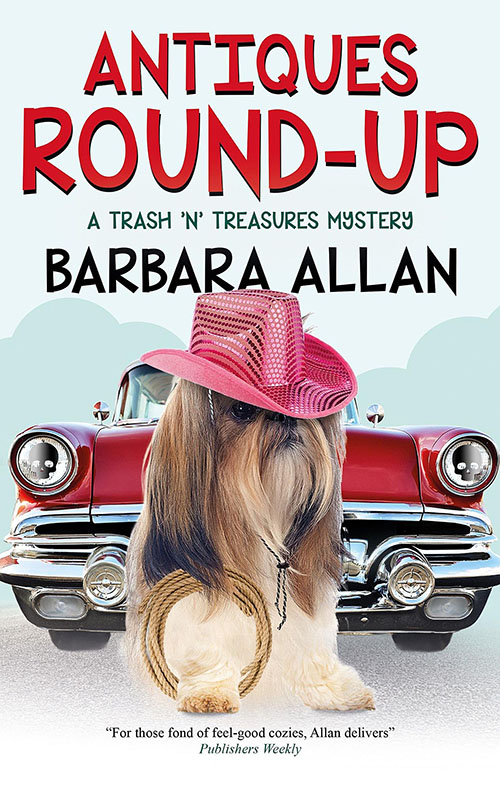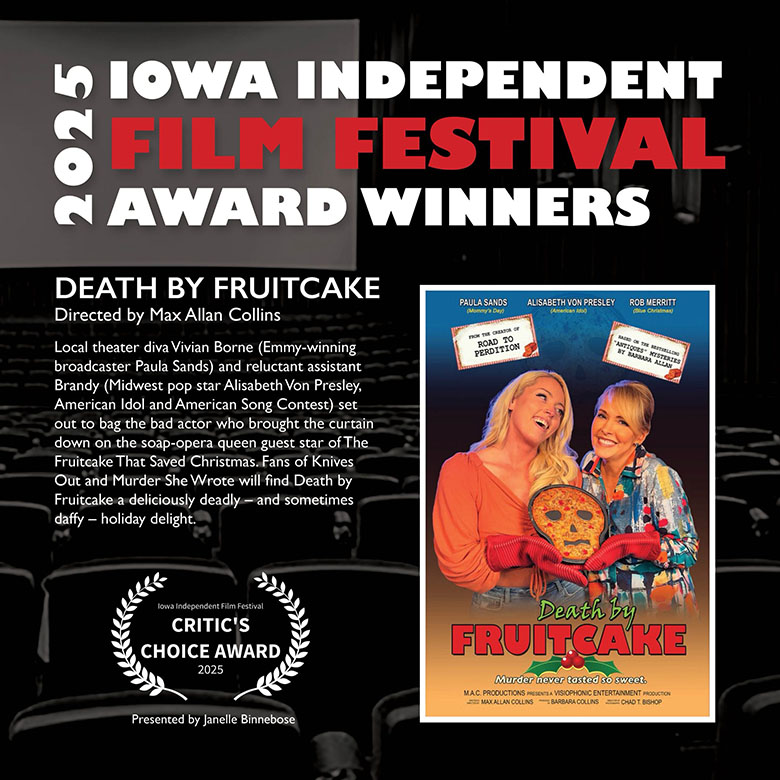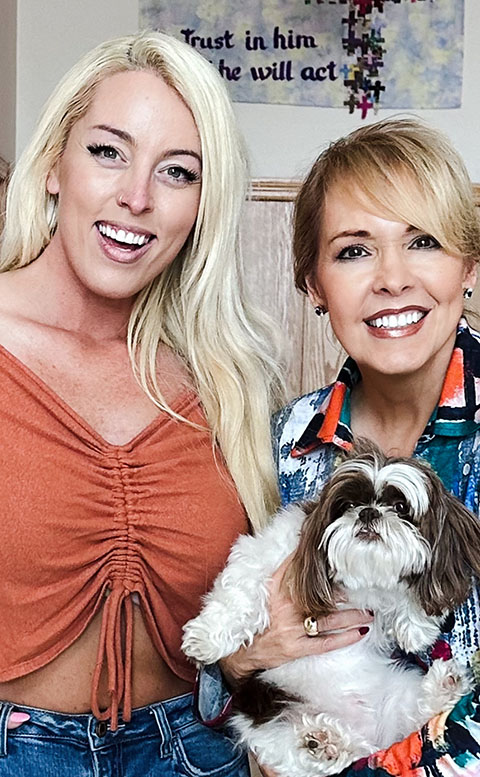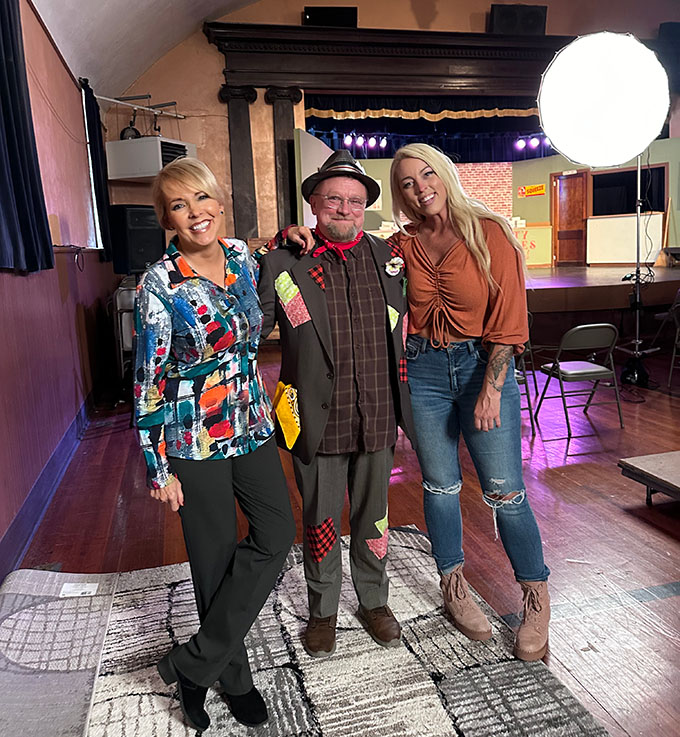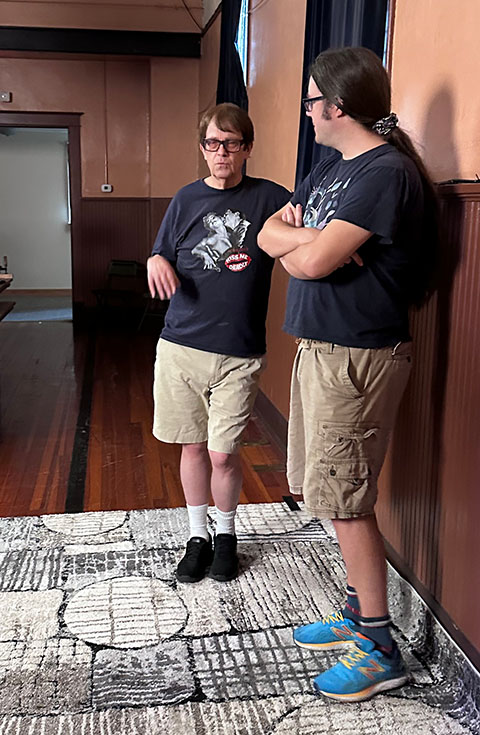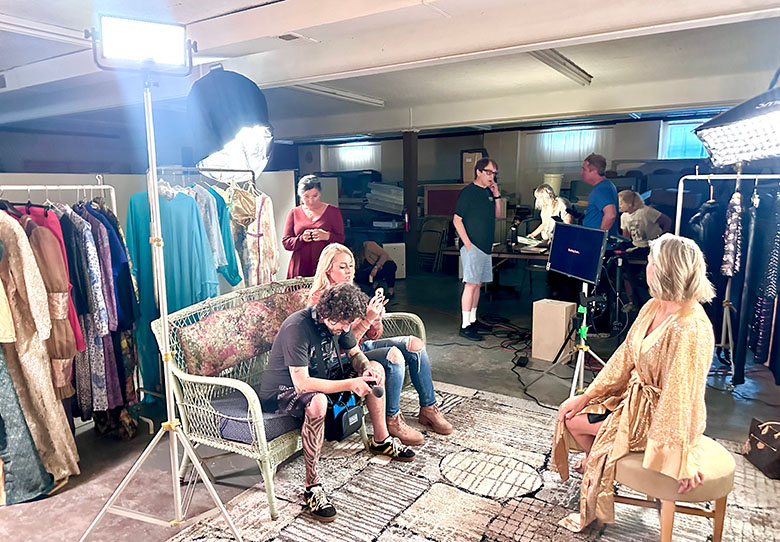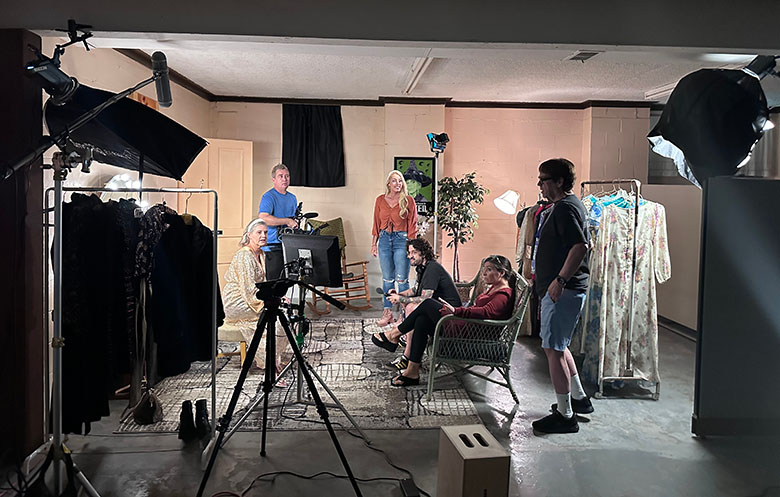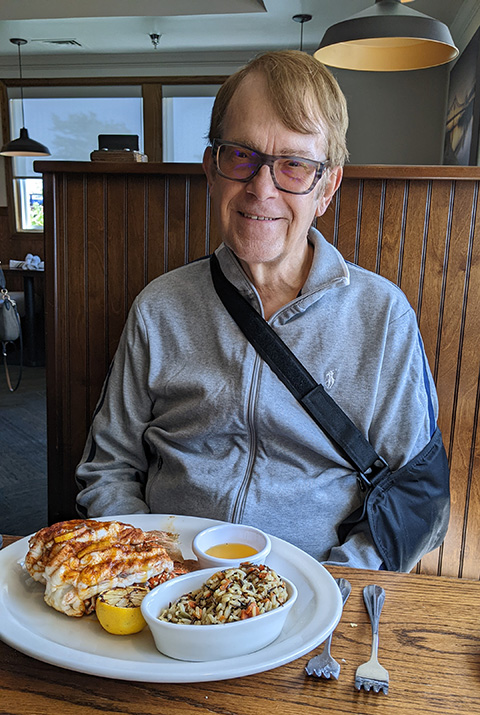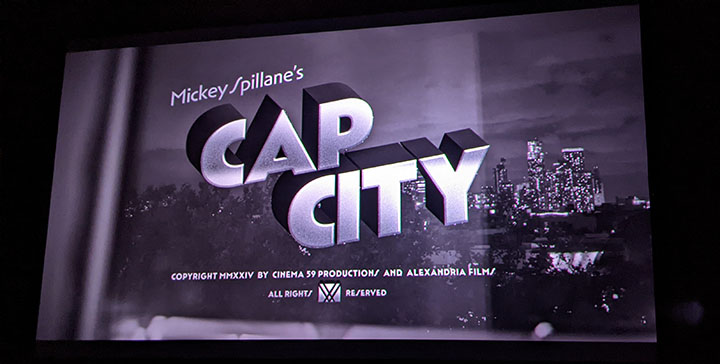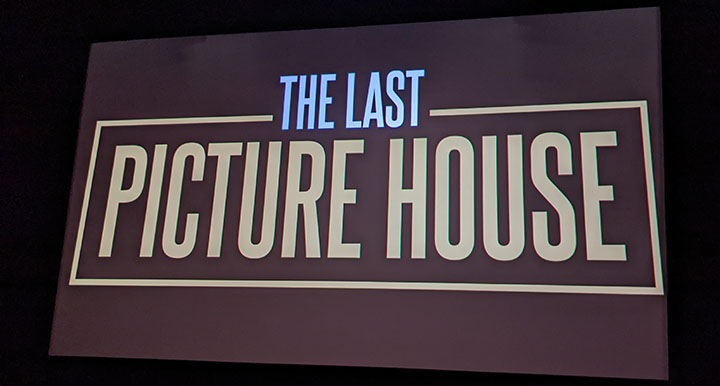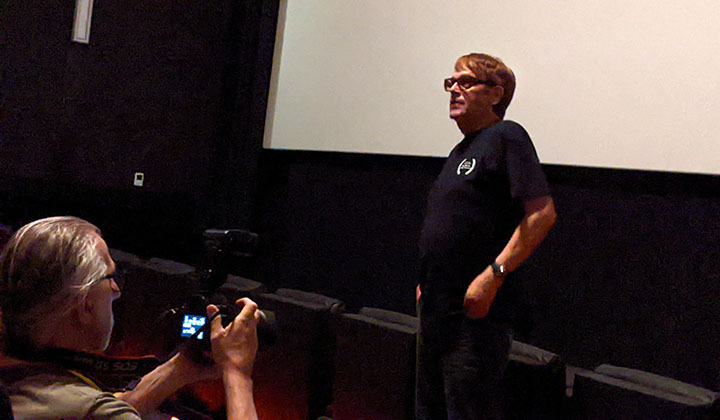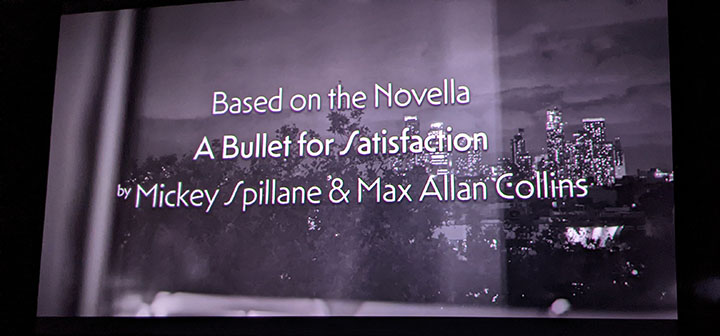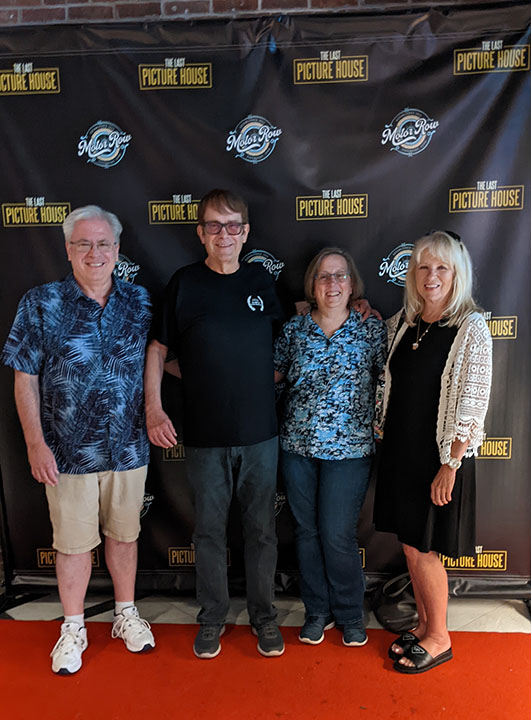A box arrived from the UK with a few advance copies of our new Antiques/Trash ‘n’ Treasures mystery, Antiques Round-Up. When I say “our,” of course, I mean Barb and my latest novel in the now long-running series.
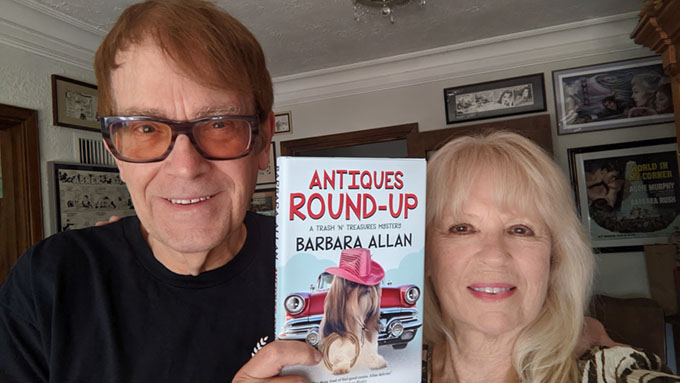
I have watched, I guess it’s been for decades now, Barb developing into a terrific writer. She was good out of the gate, and like most of us, her improvements are somewhat incremental and don’t make themselves clear until some time has passed and those improvements have accumulated.
I know I still think I’m improving as a fiction writer even at this late date. I’ve been writing long enough to have no doubt lost my fast ball here and there, but certain craft things have improved. Or at least I’m still trying to have them improved.
Barb and I have different approaches. She is slow-and-steady wins the race. Even now, I may not spend more than two months writing a novel (depends on the novel of course), but she spends most of her writing year on one book in the series. Fiction writing is a love/hate affair, but I have always loved it more than hated, and often Barb seems to be the other way around. She always talks about the current book being the last one she’s willing to do, while I’m always looking for more books to write, as if as long as I have a book contract, that God or the Grim Reaper or whatever will wait for me to finish the current novel.
If there’s a point to this ramble, it’s how proud I am of the way Barb has risen to a truly professional level, and this latest book – which will be published a couple of weeks from now – is evidence of that.
We were published for years by Kensington, but our current home is Severn House, a UK publisher that puts a lot of their emphasis on the United States market. But we do hear from readers who dropped away at the point Kensington stopped publishing us, largely because – thus far – the series has been tricky to find in Barnes and Noble, and BAM and other of the surviving brick-and-mortar book stores.
Some of these readers don’t even know the series is continuing, and when they find out it is, want to know where they can get back onboard. Both Amazon and Barnes & Noble have the Severn House books in hardcover and e-book; and all of them eventually become available from those sellers in handsome trade paperback editions.
We have had a lot of Hollywood interest in the Antiques novels – specifically for TV – over the last fifteen years. It’s gotten very close – very – but as yet no cigar. That’s why we made an Antiques movie ourselves, Death By Fruitcake, with Paula Sands (legendary Midwestern broadcaster) as Vivian Borne and Alisabeth Von Presley (Midwest pop superstar) as Brandy Borne. We’re proud of our little movie – I scripted it from a Barbara Allan novella (Antiques Fruitcake) and Barb co-produced and served as production manager.
This past week Chad Bishop, our co-producer (and Director of Photography and Editor) and I began dealing with the “deliverables” (the things a distributor requires) for Twin Engines Global. This ranges from getting trailers and the film itself to them and making closed-captioning happen and taking lawyer meetings about getting an LLC put together and a hundred other things.
Certainly easier to just write a damn book. It was however a fun, hard, unforgettable experience, shooting and editing it and all, and I wouldn’t trade it for anything.
Meanwhile, I am almost half-way through the new Quarry novel, Quarry’s Reunion, which will be the 50th anniversary book in a series that I thought Berkley Books had killed 49 years ago…but thankfully Hard Case Crime unexpectedly resuscitated it in 2006 with the help of filmmaker Jeffrey Goodman, who made a short film from my script (A Matter of Principal) and a film version of The Last Quarry (The Last Lullaby). Fans also helped keep it alive.
I mentioned that fiction writing is a love/hate affair. Though she seldom grouses, I know Barb finds writing difficult. Funny thing is, after all this time, so do I.
I will spend a full day writing two or three pages of description and set-up for a chapter, or an hour on one paragraph; fortunately for me, the rest goes a lot faster, and dialogue scenes fly, as they need to when readers encounter them. Most of my novels are mysteries, obviously, and I re-plot them constantly as I go. Quarry’s Reunion had five or six preliminary overview outlines, and I’m on the fifth or six chapter breakdown now.
Part of this is my approach being half planning, half improvisation. I try to know enough about the story I am about to tell without mounting my horse and riding in all directions. So I know major things – like who-dun-it and why. Then I come up with a plan, a road map, a structure, that may be twenty pages long. But I try to keep it loose enough to make discoveries as I go. This has me revising the plan, changing and tweaking the trip I’m taking, as I go.
Here’s another difference between writers. Though we come up with the “Barbara Allan” basic ideas together, Barb rarely asks me for an opinion or plot help or anything while she’s writing her draft. I’m willing to help, and often offer – but I have too many ideas, too many ways to solve a problem, to do anything but frustrate her, throw her off-track. So except in cases of emergencies, I keep tabs on what she’s doing on her draft, but don’t interfere. And when I do my draft, she gets out of my way. She does read my chapters as I go, so can catch anything I’m doing that will upset the plot applecart.
I mentioned above that I sometimes spend a day on a few scene-setting opening paragraphs, or an hour or more on a transitional paragraph between breaks within a chapter. And in recent years – due, I’m afraid, to all the media around us dumbing everybody down – I get some (not a lot) of readers and reviewers complaining about what they see as needless description. I will defend that only with this: I have to see a scene in my mind before I write it; and in description – yes, even clothing – I am writing about character as much as anything.
Still, as I said to Barb the other day, “It’s frustrating to spend so much time on the stuff some readers skip.”
Here’s where you can pre-order Antiques Round-Up; it’s out on Oct. 7. It’s likely also available via the Net at anywhere else you like to buy your books.
Here’s a review of The Two Jakes 4-K Blu-ray (from Kino Lorber) that is a comprehensive look at the film and the disc, and includes the commentary by Heath Holland and myself about the film. You have to scroll down to read that, but the whole review (my opinion is higher than the reviewer’s of the film itself, but the review is thoughtful and fair, even when I don’t entirely agree with it).
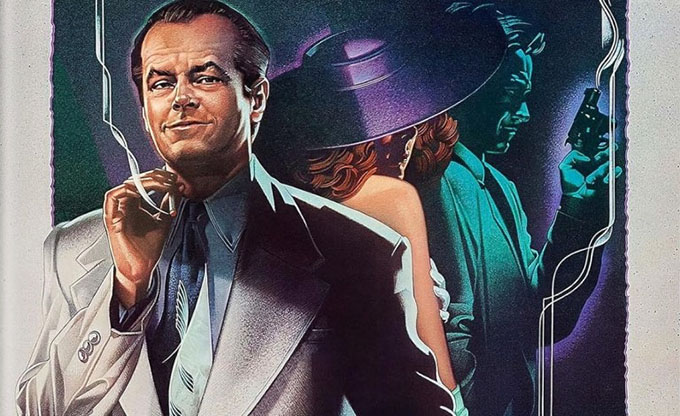
This a new bio of me at a Dick Tracy Wiki site. Looks extensive, though I admit not reading it yet.
M.A.C.
